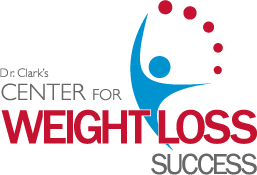 Pain by definition is physical suffering or discomfort caused by illness of injury. But there are two types of pain. Acute pain normally lasts less than 6 months, begins suddenly, and is usually sharp in quality. An example of acute pain is when you twist your ankle stepping off the porch or cut yourself with a sharp knife. Chronic pain can last for a lifetime. It comes and goes, but the pain never completely disappears. Arthritis is a common example of chronic pain. Other examples are: fibromyalgia, multiple sclerosis, cancer, migraine headaches, and more. Exercising is extremely daunting for people with chronic or acute pain. These types of people may decide to exercise when the pain and discomfort disappears, but that day seldom comes. Therefore, there are times when it’s absolutely necessary to push through the pain in order to achieve the myriad benefits that exercise has to offer.
Pain by definition is physical suffering or discomfort caused by illness of injury. But there are two types of pain. Acute pain normally lasts less than 6 months, begins suddenly, and is usually sharp in quality. An example of acute pain is when you twist your ankle stepping off the porch or cut yourself with a sharp knife. Chronic pain can last for a lifetime. It comes and goes, but the pain never completely disappears. Arthritis is a common example of chronic pain. Other examples are: fibromyalgia, multiple sclerosis, cancer, migraine headaches, and more. Exercising is extremely daunting for people with chronic or acute pain. These types of people may decide to exercise when the pain and discomfort disappears, but that day seldom comes. Therefore, there are times when it’s absolutely necessary to push through the pain in order to achieve the myriad benefits that exercise has to offer.
Most people have a good understanding of the health benefits of regular exercise. It has a positive affect on us physically, emotionally, mentally, socially, and spiritually. Each of us wants the benefits, but putting in the effort is challenging, especially if you’re experiencing pain. My 69-year-old mother was diagnosed with fibromyalgia 20 years ago. She’s always been afraid to exercise during “flair ups” in fear of causing more pain. The past few months she’s been walking every day and using her toning bands. Already, she’s lost weight, has more energy, and doesn’t fear the pain anymore. I’m amazed by her courage. My 15-year-old daughter was recently diagnosed with juvenile fibromyalgia syndrome. The symptoms are chronic pain, chronic headaches, chronic fatigue, difficulty sleeping, and more. Several months ago she stopped exercising and moving her body, resulting in a 20 pound weight gain and depression. She doesn’t want to leave the comfort zone of her house, and her health is suffering even more. Her endurance is not up to par and her skin and hair are lackluster. The health challenges she faces will endure throughout her lifetime, but regular exercise can improve so many of these ailments.
“Don’t let your fear of what could happen make nothing happen.” A new study suggests that regular exercise can alter how a person experiences pain. The longer a person continues to work out, the greater the tolerance for discomfort. In addition, endorphins, hormones secreted by the brain, are released that can lessen discomfort. Each individual has a different pain threshold. How much exercise are you capable of doing until you’ve reached that threshold?
Little changes can lead to big results. Start with 5 minutes a day and work up to 30 minutes. Choose a time of the day when you’re most energetic. By moving your body and strengthening your muscles, you’ll be more capable of performing activities of daily living (ADL’S). Examples of exercises: swimming, walking, bike riding, Tai Chi, and Yoga.
Regular exercise can alleviate pain, improve memory, ease sleep, improve mood, and more. Chronic pain doesn’t have to be debilitating. “Nobody can take away your pain, but don’t let pain take away your happiness.”
Arlyne Spalla-Benson, CPT, LWMC






 Cat Keller has a wealth of experience in marketing, e-marketing, advertising and customer service and manages our Weight Loss Nutritional Store. She is always planning something fun and exciting. special events, discounts, giveaways – it’s never a dull moment. She is happy to help you with questions you may have regarding our products or services. Cat is a graduate of William & Mary, where she studied Government/Pre-Law and minored in Marketing.
Cat Keller has a wealth of experience in marketing, e-marketing, advertising and customer service and manages our Weight Loss Nutritional Store. She is always planning something fun and exciting. special events, discounts, giveaways – it’s never a dull moment. She is happy to help you with questions you may have regarding our products or services. Cat is a graduate of William & Mary, where she studied Government/Pre-Law and minored in Marketing.